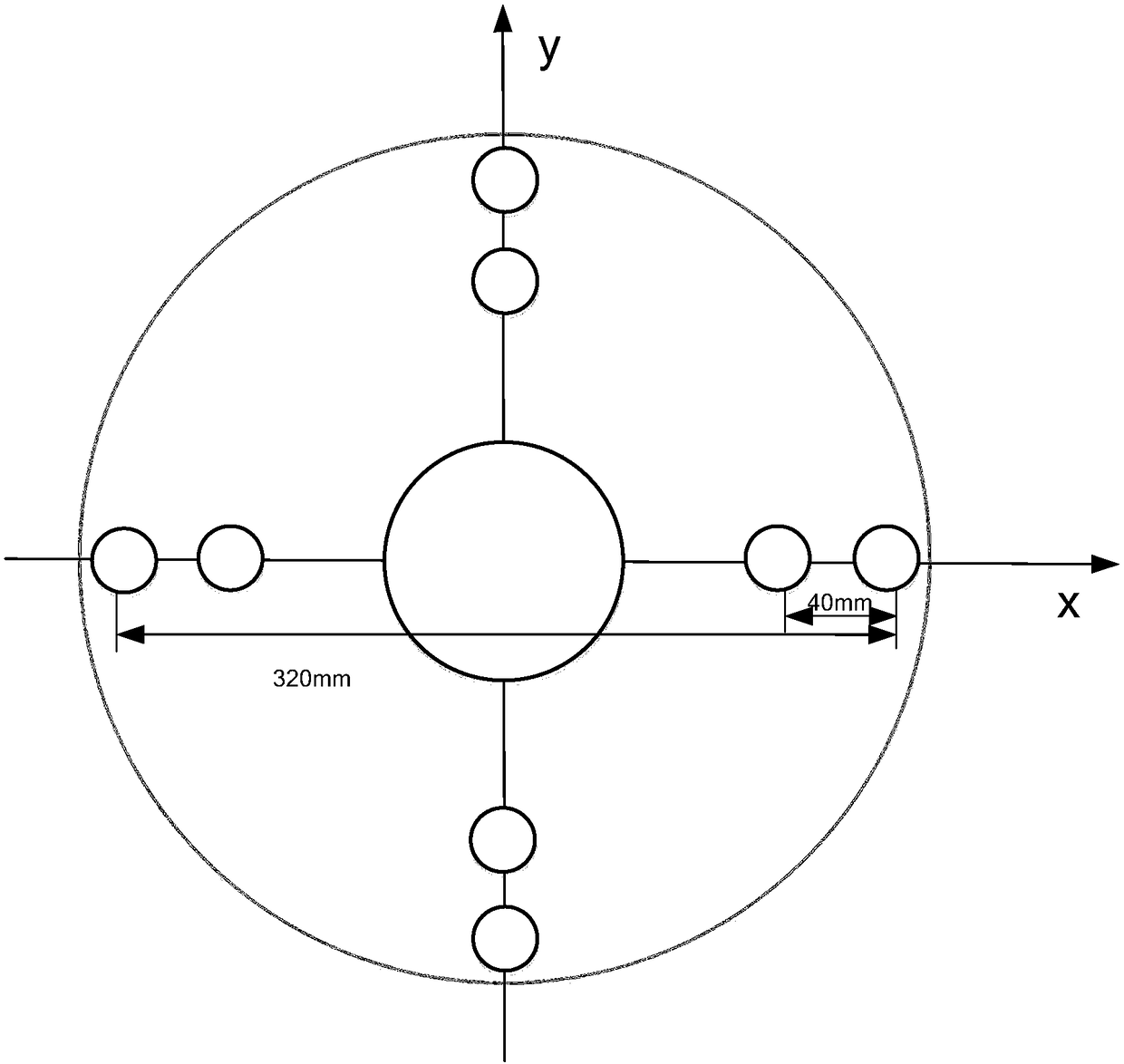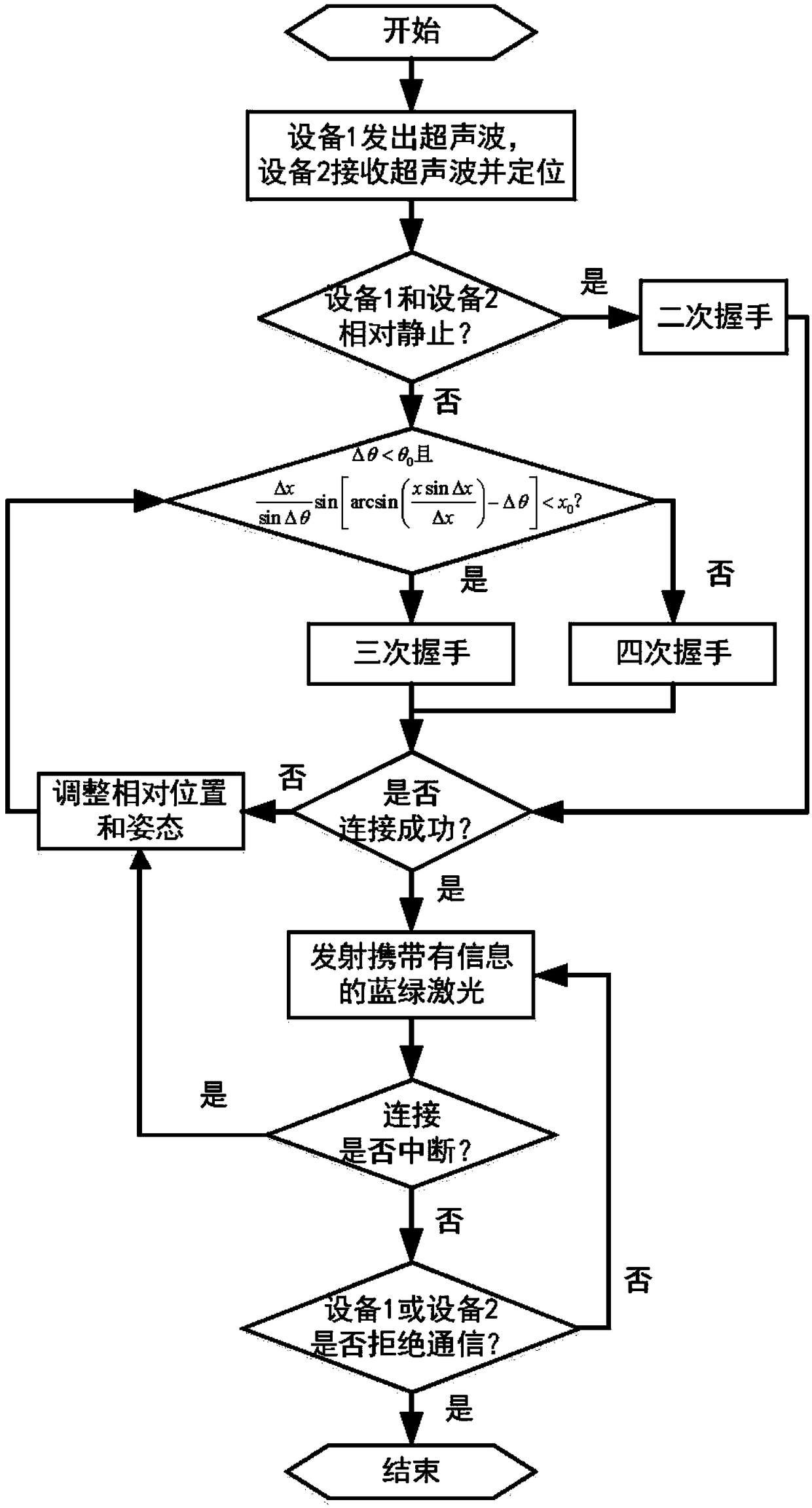Mechanism and method for establishing acousto-optic fused underwater communication link
An underwater communication and link establishment technology, applied in the direction of sound wave re-radiation, sustainable communication technology, ultrasonic/sonic/infrasonic transmission system, etc., can solve the problems of easy information loss, communication interruption, poor positioning accuracy, etc. The effect of high data transmission rate, strong confidentiality and short delay
- Summary
- Abstract
- Description
- Claims
- Application Information
AI Technical Summary
Problems solved by technology
Method used
Image
Examples
Embodiment 1
[0071] A submarine equipped with a communication device described in this example. Specifically, submarine A and submarine B are relatively stationary, and the steps of the communication link establishment process are:
[0072] S1. Submarine A first emits ultrasonic waves through the acoustic transponder installed on it, and the acoustic transducer on submarine B receives the ultrasonic waves emitted by submarine A, and realizes the positioning of submarine A through the long-range ultra-short baseline positioning system. Equipment A The distance x from device B is equal to 200;
[0073] S2. An adaptive connection mechanism is adopted. After 1s, submarine B locates A again, and the relative displacement △x and relative displacement angle △θ of submarine A to submarine B are obtained. Judging the relative position of submarine A and submarine B, submarine A and submarine B are relatively stationary, and perform a second handshake.
[0074] image 3 It is the second handshak...
Embodiment 2
[0081] A submarine equipped with a communication device described in this example. Specifically, the maximum distance x allowed for communication 0 Equal to 500m, the maximum phase shift angle θ allowed during communication 0 equal to 45°.
[0082] S1. Submarine A first emits ultrasonic waves through the acoustic transponder installed on it. The acoustic transducer on submarine B receives the ultrasonic waves emitted by submarine A, and realizes the positioning of submarine A through the long-range ultra-short baseline positioning system. Submarine A The distance x from submarine B is equal to 200;
[0083] S2. An adaptive connection mechanism is adopted. After 1s, device B locates A again, and obtains that the relative displacement △x of submarine A relative to submarine B is equal to 100m, and the relative displacement angle △θ is equal to 30°. Determine the relative position of submarine A and submarine B. The relative displacement △x and relative displacement angle △θ...
Embodiment 3
[0095] A submarine equipped with a communication device described in this example. Specifically, the maximum distance x allowed for communication 0 Equal to 500m, the maximum phase shift angle θ allowed during communication 0 It is equal to 45°, the relative displacement △x of submarine A relative to submarine B is equal to 200m, and the relative displacement angle △θ is equal to 30°.
[0096] S1. Submarine A first emits ultrasonic waves through the acoustic transponder installed on it. The acoustic transducer on submarine B receives the ultrasonic waves emitted by submarine A, and realizes the positioning of submarine A through the long-range ultra-short baseline positioning system. Submarine A The distance x from submarine B is equal to 200m;
[0097]S2. An adaptive connection mechanism is adopted. After 1s, device B locates A again, and obtains that the relative displacement △x of submarine A relative to submarine B is equal to 400m, and the relative displacement angle △...
PUM
 Login to View More
Login to View More Abstract
Description
Claims
Application Information
 Login to View More
Login to View More - R&D
- Intellectual Property
- Life Sciences
- Materials
- Tech Scout
- Unparalleled Data Quality
- Higher Quality Content
- 60% Fewer Hallucinations
Browse by: Latest US Patents, China's latest patents, Technical Efficacy Thesaurus, Application Domain, Technology Topic, Popular Technical Reports.
© 2025 PatSnap. All rights reserved.Legal|Privacy policy|Modern Slavery Act Transparency Statement|Sitemap|About US| Contact US: help@patsnap.com



